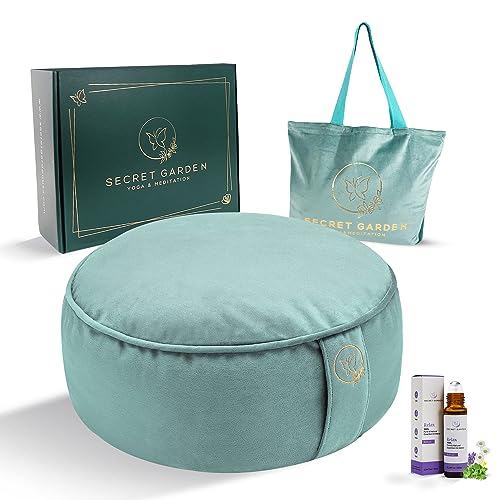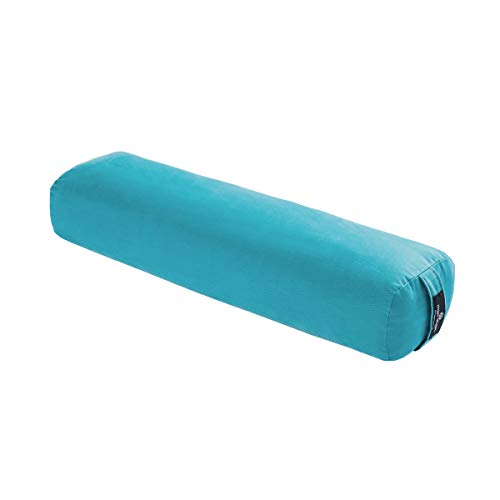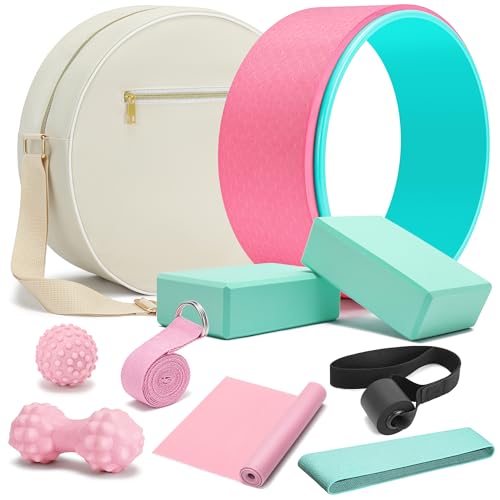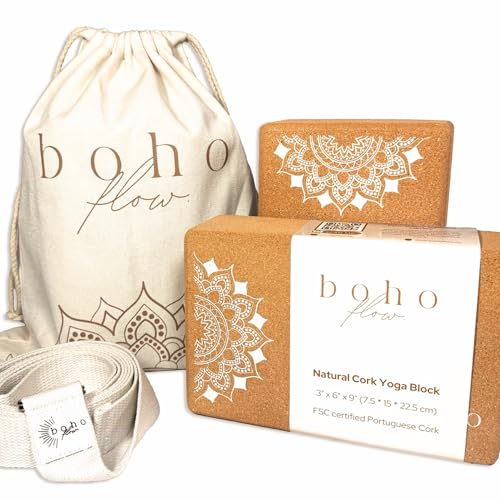Yoga and Meditation Accessories
Yoga Mat
Using a yoga mat while doing yoga can be beneficial for several reasons:
- Cushioning and support: A yoga mat provides a comfortable and cushioned surface for your body, especially when doing poses that require you to be on the floor or on your hands and knees. This can help prevent discomfort and strain on your joints.
- Grip: Yoga mats are typically made with a non-slip surface, which helps provide traction and grip for your hands and feet during poses. This can help you maintain stability and balance, reducing the risk of slipping or sliding during your practice.
- Hygiene: A yoga mat creates a barrier between you and the floor, which can help prevent direct contact with dirt, sweat, and germs that may be present on the floor of a yoga studio or gym.
- Alignment: The lines and markers on a yoga mat can help you with alignment during poses, ensuring that you are positioning your body correctly and getting the most out of each pose.
Overall, using a yoga mat can enhance your yoga practice by providing comfort, stability, hygiene, and alignment assistance.
Sponsored – (As an Amazon Associate I earn from qualifying purchases)
Meditation cushions
Using meditation cushions can be beneficial during meditation for several reasons:
- Comfort: Meditation cushions provide a soft and supportive surface for sitting, making it more comfortable to maintain a seated position for an extended period of time. This can help alleviate discomfort or pain in the hips, back, and knees, allowing you to focus more fully on your meditation practice.
- Posture: Proper posture is essential for effective meditation. Meditation cushions, such as zafus or meditation benches, help lift your hips and tilt your pelvis slightly forward, which naturally helps align your spine and reduce strain on your back. This promotes a more comfortable and sustainable sitting posture, allowing you to meditate with greater ease.
- Focus: Physical discomfort or distraction can hinder your ability to focus during meditation. By providing a comfortable and stable foundation for sitting, meditation cushions can help minimize physical discomfort and allow you to direct your attention inward, enhancing your mindfulness practice.
- Breathing: Sitting on a meditation cushion can also facilitate proper breathing techniques during meditation. With an aligned spine and relaxed body, you can breathe more deeply and diaphragmatically, promoting relaxation and mindfulness.
- Tradition: Using a meditation cushion can also be a way to honor and connect with the tradition of meditation practice. Cushions like zafus, zabutons, or meditation benches have been used for centuries in various meditation traditions to support practitioners in finding a comfortable and stable position for meditation.
Overall, using a meditation cushion can enhance your meditation practice by promoting comfort, proper posture, focus, and a deeper connection to the tradition of meditation. It can make your meditation sessions more enjoyable and sustainable, allowing you to fully immerse yourself in the practice.
Sponsored – (As an Amazon Associate I earn from qualifying purchases)
Yoga blocks and straps
Yoga blocks and straps are essential props that can enhance your yoga practice in the following ways:
- Enhance Alignment: Yoga blocks can be used to support proper alignment by bringing the floor closer to you. They provide stability and can help you maintain proper posture in poses where flexibility or mobility is limited.
- Deepen Stretches: Straps can help you deepen stretches by extending your reach in poses where you may not be able to comfortably grasp your limbs. This allows you to access a greater range of motion and work towards increased flexibility.
- Build Strength: Blocks can be used as tools to create resistance and build strength. For example, in a supported plank pose, placing your hands on blocks can increase the challenge of the pose and engage more muscles.
- Increase Stability: Straps can improve stability and balance by providing external support in balancing poses or poses that require binding. They can help you stay in the pose longer and with more control.
- Modify Poses: Blocks and straps allow for modifications in poses to accommodate different body types, injuries, or limitations. They can make yoga more accessible to practitioners of all levels by providing support and assistance when needed.
- Aid in Progression: Using props can help you progress in your practice by gradually working towards challenging poses. They allow you to safely explore and deepen your practice without compromising form or risking injury.
Overall, incorporating yoga blocks and straps into your practice can improve alignment, deepen stretches, build strength, increase stability, modify poses, and aid in your progression, making your yoga practice more effective, safe, and enjoyable.
Sponsored – (As an Amazon Associate I earn from qualifying purchases)
Essential oil diffusers
Essential oil diffusers are popular for a variety of reasons, including their therapeutic benefits and ability to create a pleasant atmosphere. Here are some reasons why you should consider using essential oil diffusers:
- Aromatherapy: Essential oil diffusers disperse the aroma of essential oils into the air, allowing you to benefit from the therapeutic properties of the oils through inhalation. Aromatherapy can help promote relaxation, reduce stress, improve mood, enhance focus, and support overall well-being.
- Air Purification: Some essential oils have antimicrobial properties that can help purify the air by killing airborne bacteria, viruses, and mold spores. Diffusing essential oils like tea tree or eucalyptus can help freshen and cleanse the air in your space.
- Improved Sleep: Certain essential oils, such as lavender or chamomile, are known for their calming and sedative effects. Diffusing these oils before bedtime can create a relaxing environment that may help improve the quality of your sleep.
- Mood Enhancement: Essential oils have the power to influence emotions and mood. Diffusing uplifting oils like citrus blends or peppermint can create a cheerful atmosphere and boost your mood throughout the day.
- Respiratory Support: Inhalation of certain essential oils can help support respiratory health. Oils like eucalyptus, peppermint, or tea tree can be diffused to ease congestion, open up the airways, and provide relief from respiratory symptoms.
- Stress Relief: The soothing scents of essential oils can help alleviate stress and anxiety. Diffusing calming oils like frankincense, ylang-ylang, or bergamot can create a tranquil environment and promote relaxation.
- Natural Fragrance: Essential oil diffusers offer a natural and chemical-free way to freshen up your living space. You can enjoy a personalized aroma experience by blending different essential oils to create your own signature scents.
- Convenient and Safe: Diffusing essential oils is a safe and convenient way to enjoy their benefits without the need for direct skin contact or ingestion. Diffusers are easy to use and can be left running for extended periods without supervision.
Sponsored – (As an Amazon Associate I earn from qualifying purchases)




















